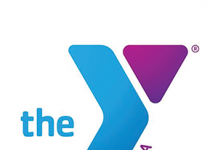Margaret Weber remembers arriving at the Christ the King Church parking lot on that first Saturday morning not knowing how things would turn out. She and 20 or so friends had started a recycling group — in large part because Detroit had recently constructed the world’s largest municipal incinerator, where the city’s garbage, including recyclables, was being burned.
So the group set up large, dumpster-like bins as a kind of pop-up, drop-off center for their neighborhoods in northwest Detroit. They hoped around 200 people would show up. But by the end of the day, more than 300 cars had rolled through the lot.

From the start, what many consider to be Detroit’s first recycling program that actually worked was a plucky, grass-roots effort. To even pay for a hauler to drag their recyclables away, Weber says they would run around town, hitting up local bars and collecting empty glass bottles, which they’d store in a friend’s garage until pick-up day. They’d get paid for the glass, and that would help pay for the neighborhood drop-off program.
“We all smelled like alcohol, but it got the job done in those early days before we could fundraise,” Weber says.
Rosedale Recycles’ monthly drop-off site, which launched in 1990, continued this way for 24 years, Weber and company never once missing a third-Saturday-of-the-month collection. During that time, the city also tried to get drop-off locations going, but they weren’t marketed well.
More grass-roots recycling efforts popped up across Detroit. Shortly after Weber’s group started, a guy named Matthew Naimi, who worked in the trash business, grabbed a dumpster, put it over by the Bronx Bar, and simply told people they could start putting recyclables in it.
The drop-off site became so popular that he and his team eventually decided they needed their own facility, moving into the old Lincoln Motor Car Factory where they also operate a take-something, leave-something thrift outlet called the “Junk Hole.”
 Naimi’s group, Recycle Here!, also started a sister outfit called Green Living Science to focus on recycling education. Walk the grounds there and you’ll see various monuments to the creative power of reuse. The Lincoln Street Art Park, for example, is an outdoor courtyard that’s part junkyard, part artist garden; it has murals, graffiti, sculptures, benches made of old slabs of cement — even a rickety event stage made of all reclaimed materials.
Naimi’s group, Recycle Here!, also started a sister outfit called Green Living Science to focus on recycling education. Walk the grounds there and you’ll see various monuments to the creative power of reuse. The Lincoln Street Art Park, for example, is an outdoor courtyard that’s part junkyard, part artist garden; it has murals, graffiti, sculptures, benches made of old slabs of cement — even a rickety event stage made of all reclaimed materials.
And then there’s GLS’ secret weapon, The Container: a gargantuan white shipping container where past Detroit News issues decorate the walls; old doors have been turned into tables; stools are made from milk crates; and the floor is a fragmented mosaic of boards from an old school gym.
The Container is where GLS’ real work happens. The team regularly crams this classroom full of kids for hands-on activities that demonstrate how recycling and reusing materials can make a difference in Detroit. GLS’ Rachel Klegon is unapologetic about their strategy of brainwashing children: The goal is to get the kids to go back to their parents and start their own conversations about recycling.
 “I would hear all the time from parents that they never thought about recycling, but their kid learned about it in school — so here they are [recycling],” Klegon says. “Some of them get kind of mad at you, but they do it anyway.”
“I would hear all the time from parents that they never thought about recycling, but their kid learned about it in school — so here they are [recycling],” Klegon says. “Some of them get kind of mad at you, but they do it anyway.”
The Recycle Here! drop-off site provided a solution for many Detroit residents, but it wasn’t a comprehensive plan for the entire city. So in 2007, Weber and Rosedale Recycles helped found a coalition of more than 20 community groups. It was called Zero Waste Detroit, and one of their main goals was to bring curbside recycling to Detroit for the first time.

ZWD lobbied state and city officials, and in 2009, the city finally agreed to launch a pilot program that brought curbside recycling to 24,000 households. But it would take another five years to make that service available citywide. “It takes a long time to build a new culture,” Weber says.
Detroit now has curbside, but the participation rate isn’t what the city’s recycling pioneers want it to be. One of the biggest hurdles: Recycling containers aren’t automatically handed out to all Detroiters; residents must choose to opt-in to the program and purchase the 64-gallon container from the city, which costs $25.
But there are a few ways to get a free one. The City of Detroit has a game on its website where players can learn about recycling. Completion of the game will result in a free container, though some advocates note that the program may struggle to reach Detroiters without regular internet access. And both Zero Waste Detroit and Green Living Science also host workshops where participants can get a free bin.
One measure that all the hard work has paid off: Weber and Rosedale Recycles decided to discontinue their monthly pop-up collection site in 2014. However, the drop-off center at Recycle Here! is still used today by hardcore recyclers who prefer to sort their own materials — many of whom are veterans from the early days of recycling in Detroit.
Citywide, the curbside program is also starting to gain momentum. After Detroit limped along with a 10 percent participation rate in 2015, the folks at Zero Waste Detroit say the city reached its 20 percent participation goal in May — one month ahead of schedule.
That still leaves more than 100,000 Detroit households that aren’t recycling yet. But it’s clear the grass-roots activists who helped get things this far won’t be letting up until they are.
Read more about the nonprofits in this story: Zero Waste Detroit (zerowastedetroit.org); Recycle Here! (recyclehere.net); Green Living Science (greenlivingscience.org).
|
|
|










